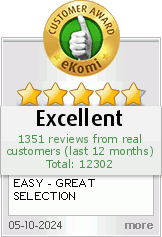How to Attract Birds and Bees to Your Garden
Gardeners rejoice in a humming and buzzing garden on a sunny spring day. Birds, bees, and other pollinators pay visits to flowering plants of all colors, shapes, and sizes. This is not only entertaining to watch, but an important part of plants’ reproduction. Each time a bird or bug drinks nectar from a plant, they become covered in pollen. They carry that pollen around with them as they feast from many different flowers, depositing the pollen on new plants, anxiously waiting to reproduce. Adding native plants to your garden can help attract these handy helpers that make gardens thrive and keep our environment healthy.
Why are Pollinators Important?
Pollinators are birds, bees, butterflies, flies, or other insects that carry pollen from one plant to another to aid in plant reproduction. Pollinators, however, have no idea how important they are to plants’ survival! They are simply feasting on nectar, getting themselves all dirty with pollen, and dropping off the dusty specks at the site of their next meal. This is just part of nature’s beautiful design! Birds, bees, and insects can benefit your garden by:
- Distributing pollen that is essential for some plants to reproduce.
- Distributing pollen that results in larger and improved food crops.
- Providing entertainment and diversity to your home garden.
- Preying on other insects that harm plants.
There are many ways that pollinators help your garden, but did you know that they need our help too? Many types of pollinators are experiencing habitat loss from humans’ impact on the environment. Gardening with native plants will help the birds and bees receive the nutrition they need while also allowing your posy patch to thrive.
Think Like the Birds and the Bees
You may be wondering how to attract these friendly insects into your garden. First you have to think like the birds and the bees. Pollinators rely on scent and visual cues to find their food, and they display preferences for some flowers over others. Bees can see blue and green colors and also use flowers’ ultraviolet signals to locate nectar. Some birds can see violet, red, blue and green, while many flies can only see white and yellow. Scientists have used fossil records to determine that most flowers were originally yellow, white, or green, and flowers have evolved over time to carry colors that attract their local pollinators.
The best way to create wildlife diversity in your garden is by planting a variety of colorful flowers that will appeal to many of your garden friends. There are several online tools that help nature enthusiasts find out which plants are native to their zip codes and will present the tastiest meals for the pollinators already found in their backyards.
Top Plants to Attract Pollinators to Your Garden
Native plants are those that have originated in your area and adapted over time to the local growing conditions and wildlife. Today’s gardens also often contain non-native and ornamental plants that may have been purchased at a garden center. The types of native plants can vary widely depending on where you are located, and those will likely be the plants that attract the most pollinators and benefit the environment the most. In the United States, some of the most attractive plants to pollinators include:
- Asters
Tiny purple or white flowers with a daisy shape that grow on bushes.
Attracts: Butterflies
- Bee Balm
A spiky red, white, pink, or purple flower with an herbal scent.
Attracts: Butterflies, birds, bees
- Black Eyed Susan
A yellow flower with a black center. Their dried heads become bird food.
Attracts: Butterflies, bees, birds
- Butterfly Bush
An elongated pink, purple, red, white, or yellow flower that grows on a tall shrub.
Attracts: Butterflies, birds
- Echinacea
Pink, orange, or white daisy-shaped flowers with a cone-like center.
Attracts: Butterflies, bees, hummingbirds
- Yarrow
A low-growing pink, red, white, or yellow perennial with tightly clustered flowers. Gardeners beware, however: Yarrow can also be invasive.
Attracts: Butterflies
Have fun researching the native plants in your area! Once you have added these attractive species to your garden, kick back and watch as the many unique and interesting pollinators are attracted to your garden and your plants begin to thrive. Mother Nature will thank you!
This article was published by Chad Kremp



